4.02.2024
SpaceX shows off Super Heavy boosters 'for the next 3' Starship flights (photos)
'Super Heavy boosters for the next three flights, with a fourth ready to stack, in the Starbase Megabay.'
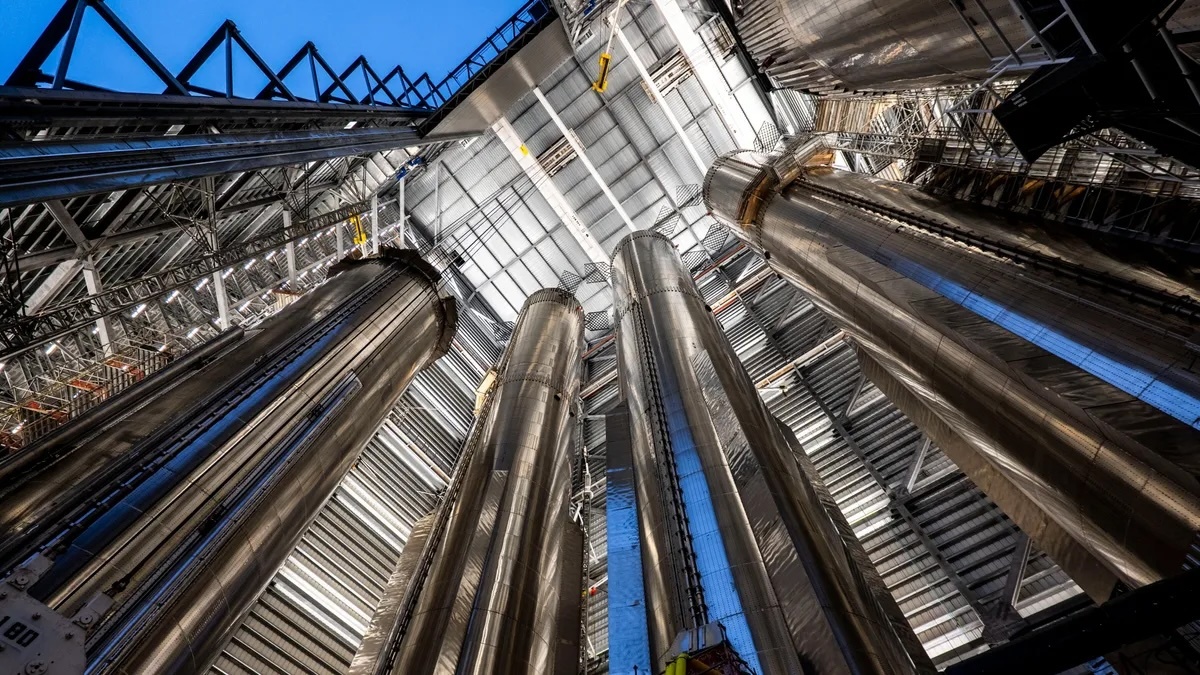
SpaceX shared this photo of four Super Heavy boosters in the "megabay" at its Starbase site via X on Feb. 2, 2024. (Image credit: SpaceX via X
SpaceX wants to launch its giant Starship vehicle often over the coming months, as a new photo makes abundantly clear.
In a post on X this afternoon (Feb. 2), SpaceX shared photos of the "megabay" at its Stabase site in South Texas, the center of Starship manufacturing and launch activities.
The building is jam-packed with towering stainless-steel cylinders — Super Heavy vehicles, the first stage of SpaceX's Starship megarocket — which rise nearly to the roof.
"Super Heavy boosters for the next three flights, with a fourth ready to stack, in the Starbase Megabay," SpaceX wrote in the post.

Another shot of the Super Heavy boosters, with some people in it for scale. (Image credit: SpaceX via X
Starship consists of two elements, both of which are designed to be fully and rapidly reusable: Super Heavy and a 165-foot-tall (50 meters) upper-stage spacecraft called Starship.
When fully stacked, Starship stands about 400 feet (122 meters) tall. It's the biggest and most powerful rocket ever built, capable of launching up to 150 tons of payload to low Earth orbit, according to SpaceX's spec sheet.
Starship isn't up and running yet, however; it has launched just twice to date, on test flights in April and November of last year. Both ended in powerful explosions. But Starship made enough progress on the second liftoff — acing a full-duration Super Heavy burn and successfully separating its two stages, for example — that success seems like a real possibility on flight number three, which may be just around the corner.
Indeed, SpaceX aims to launch the test mission this month, provided it secures a launch license from the U.S. Federal Aviation Administration in time. (The FAA is overseeing an investigation into what happened on the November flight.)
SpaceX thinks that Starship's combination of power and reusability will lead to huge breakthroughs in exploration, allowing humanity to put down stakes on the moon and Mars.
NASA sees promise in the vehicle: It selected Starship to be the first crewed moon lander for its Artemis program, which aims to establish a permanent human presence on and around Earth's nearest neighbor by the end of the 2020s. Starship will put astronauts down on the lunar surface for the first time in 2026, on the Artemis 3 mission, if all goes according to plan.
Quelle: SC
----
Update: 14.02.2024
.
SpaceX rolls giant Starship rocket to launch pad ahead of 3rd test flight (photos)
Starship's two stages rolled out separately and were stacked on Saturday (Feb. 10).
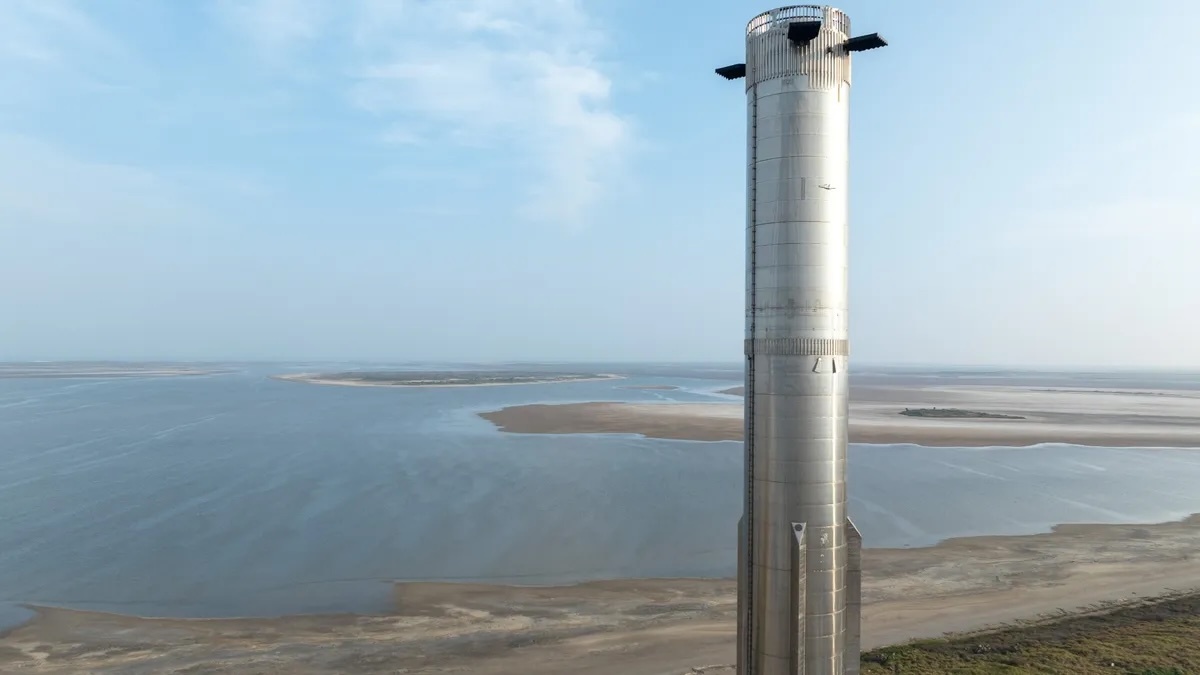
SpaceX rolls the Starship Super Heavy prototype called Booster 10 to the launch pad in South Texas for testing in February 2024. SpaceX posted this photo to X on Feb. 10, 2024. (Image credit: SpaceX via X)
SpaceX continues to gear up for the third test flight of its giant Starship rocket and the private spaceflight company has some amazing photos to prove it.
The company rolled the two stages of its latest Starship rocket to the launch pad at Starbase, its site on South Texas' Gulf Coast, over the weekend.
SpaceX documented the milestone publicly, sharing three photos of the move in a post on X (formerly Twitter) on Saturday (Feb. 10).
SpaceX then stacked the two elements — the huge Super Heavy booster and the 165-foot-tall (50 meters) Starship upper stage — atop Starbase's orbital launch mount on Saturday night (Feb. 10), as NASASpaceflight.com noted.
Such work is part of the prep for Starship's third test flight, which SpaceX aims to launch in the coming weeks, provided a license from the U.S. Federal Aviation Administration (FAA) comes through in time.
It's unclear when SpaceX will get that license, however. The FAA is still investigating what happened on Starship's second flight, which lifted off from Starbase last November. Starship flew well on that mission, notching milestones such as a nominal Super Heavy engine burn and successful stage separation. But both Starship and Super Heavy ended up exploding, and the flight ended just eight minutes after launch.
The first Starship flight, which launched last April, ended with the destruction of a tumbling Starship four minutes after liftoff. That vehicle experienced some problems with its first-stage burn, and its two stages failed to separate as planned.
Starship is designed to be fully and rapidly reusable, and it will be capable of delivering up to 150 tons of payload to low Earth orbit. SpaceX is developing the vehicle to expand humanity's footprint out into the solar system — especially to the fourth rock from the sun.
"We are mapping out a game plan to get a million people to Mars. Civilization only passes the single-planet Great Filter when Mars can survive even if Earth supply ships stop coming," SpaceX founder and CEO Elon Musk said in an X post on Saturday.
Quelle: SC
----
Update: 8.03.2024
.
SpaceX eyes March 14 for 3rd Starship test flight
We could see Starship fly again as soon as next week.
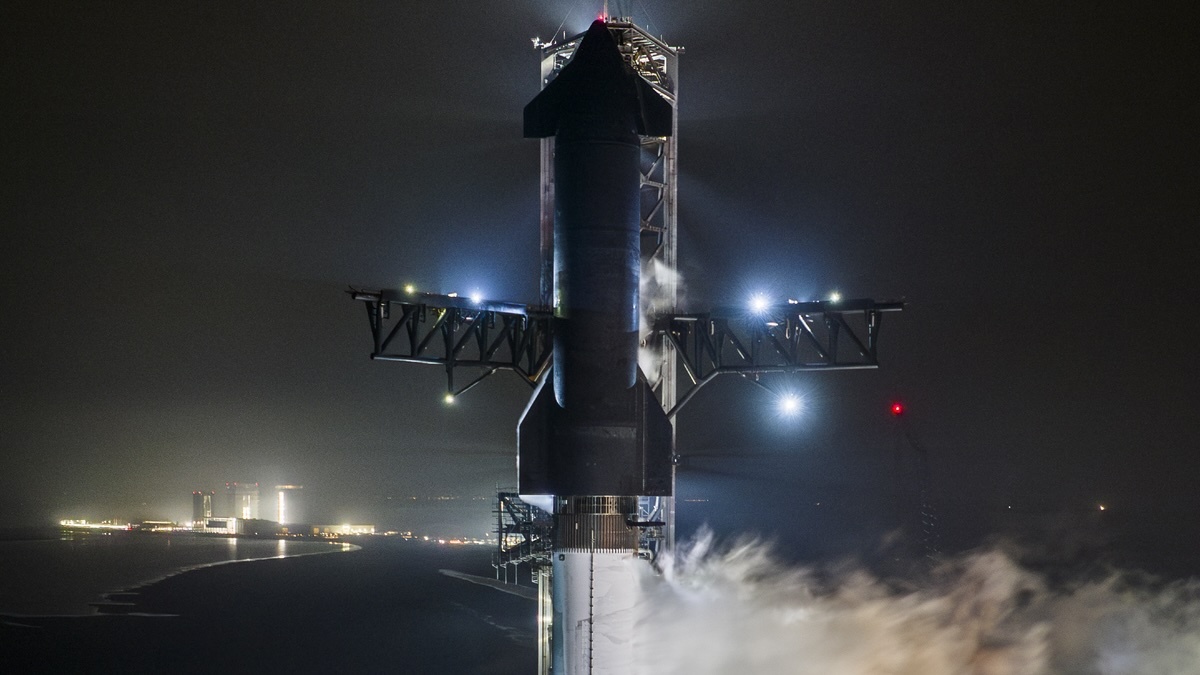
The next test flight of SpaceX's Starship rocket could come as soon as next week.
SpaceX is targeting March 14 for the third flight test of its Starship vehicle, according to a post on X (formerly Twitter) the company quietly published announcing a livestream of the launch. Starship somewhat confusingly consists of two parts: The stainless-steel reusable upper stage known also as Starship, and its Super Heavy first-stage booster. Together, the two stand over 400 feet tall (122 meters).
The company recently performed a critical fueling test on March at its Starbase facility near Boca Chica, Texas. During the test, over 10 million pounds of liquid methane and liquid oxygen were pumped into the rocket. "Starship Flight 3 preparing for launch," SpaceX CEO Elon Musk wrote in a post on X accompanying photos of the fueling test. You can watch the test here at Space.com, when the time comes, courtesy of SpaceX.
Starship and Super Heavy are designed to be fully reusable. Together, they are the world's most powerful rocket and are capable of launching up to 165 tons (150 metric tons) into orbit.
NASA selected Starship to land astronauts on the moon during its upcoming Artemis 3 mission scheduled for no earlier than 2026. But Starship still has a few hurdles to clear before that can happen. For one, it needs to reach orbit first. On the rocket's first two test flights, one in April 2023 and another in November 2023, Starship failed to do so.
During the first test flight, Starship failed to separate from its first-stage booster and began tumbling. SpaceX detonated the rocket just under four minutes after liftoff.
On its second test flight, Starship separated successfully from Super Heavy around 2 minutes and 40 seconds into flight, but Super Heavy blew up shortly after in a massive aerial explosion.
Following that second test flight, the U.S. Federal Aviation Administration (FAA) identified 17 corrective actions for SpaceX to take before the next flight: 10 on Starship and seven on the Super Heavy booster.
SpaceX has completed those, according to a Feb. 26 statement, noting that the company has "implemented hardware changes on upcoming Starship vehicles to improve leak reduction, fire protection, and refined operations associated with the propellant vent to increase reliability."
Quelle: SC
----
Update: 13.03.2024
.
Startvorbereitung für STARSHIP'S THIRD FLIGHT TEST
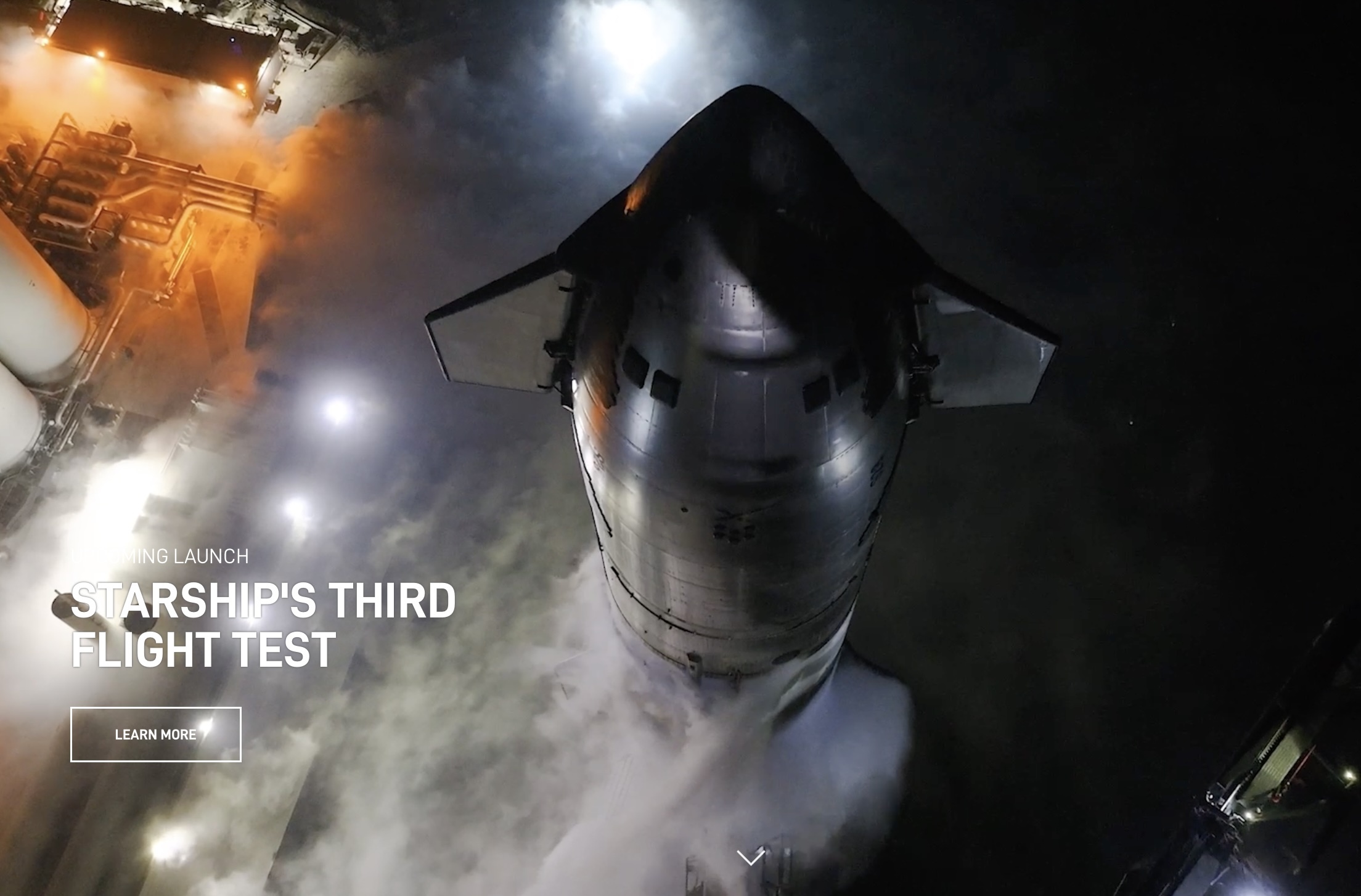
The third flight test of Starship could launch as soon as March 14, pending regulatory approval.
A live webcast of the flight test will begin about 30 minutes before liftoff, which you can watch here and on X @SpaceX. As is the case with all developmental testing, the schedule is dynamic and likely to change, so be sure to stay tuned to our X account for updates.
Starship’s second flight test achieved a number of major milestones and provided invaluable data to continue rapidly developing Starship. Each of these flight tests continue to be just that: a test. They aren’t occurring in a lab or on a test stand, but are putting flight hardware in a flight environment to maximize learning.
The third flight test aims to build on what we’ve learned from previous flights while attempting a number of ambitious objectives, including the successful ascent burn of both stages, opening and closing Starship’s payload door, a propellant transfer demonstration during the upper stage’s coast phase, the first ever re-light of a Raptor engine while in space, and a controlled reentry of Starship. It will also fly a new trajectory, with Starship targeted to splashdown in the Indian Ocean. This new flight path enables us to attempt new techniques like in-space engine burns while maximizing public safety.
This rapid iterative development approach has been the basis for all of SpaceX’s major innovative advancements, including Falcon, Dragon, and Starlink. Recursive improvement is essential as we work to build a fully reusable transportation system capable of carrying both crew and cargo to Earth orbit, help humanity return to the Moon, and ultimately travel to Mars and beyond.
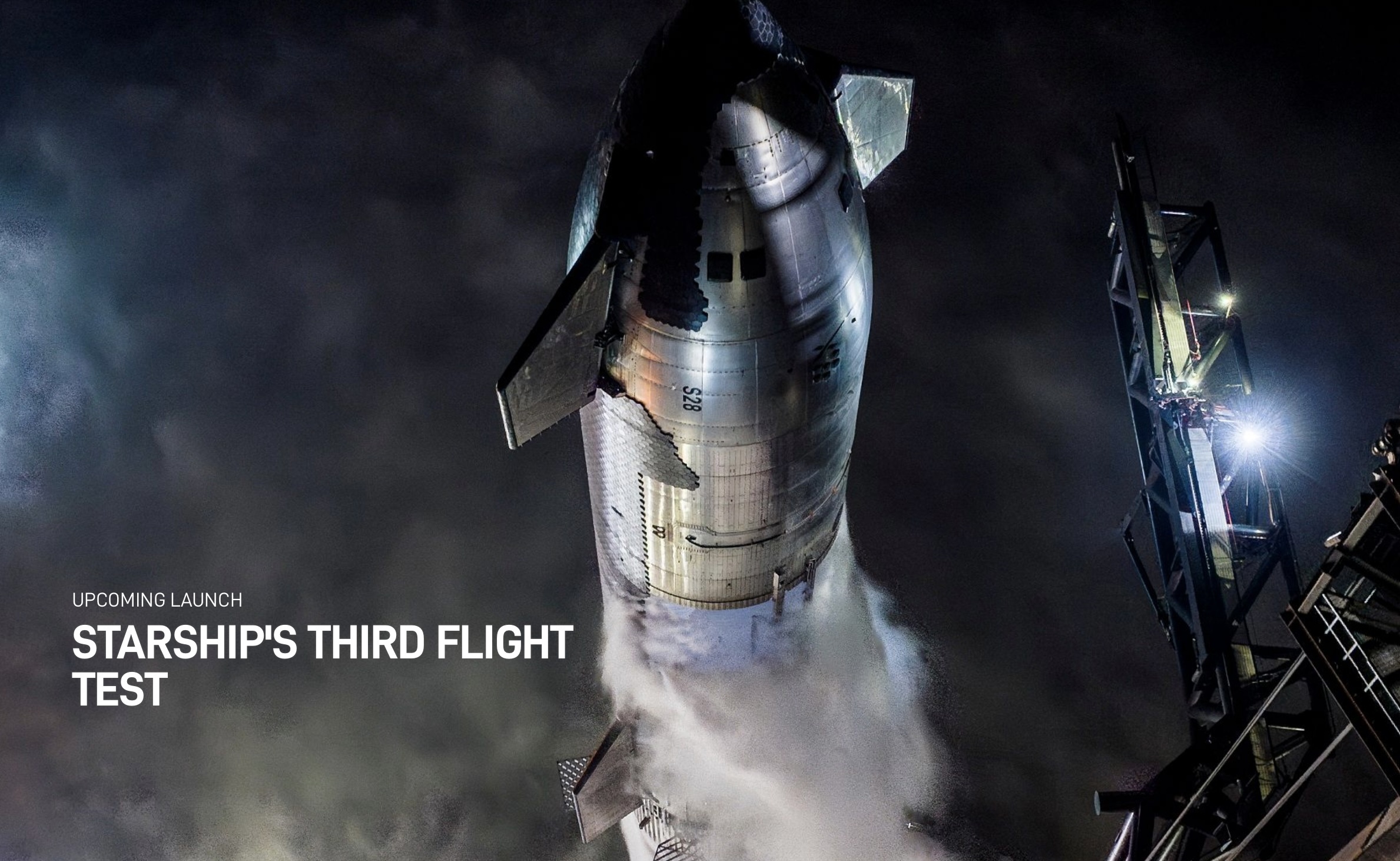
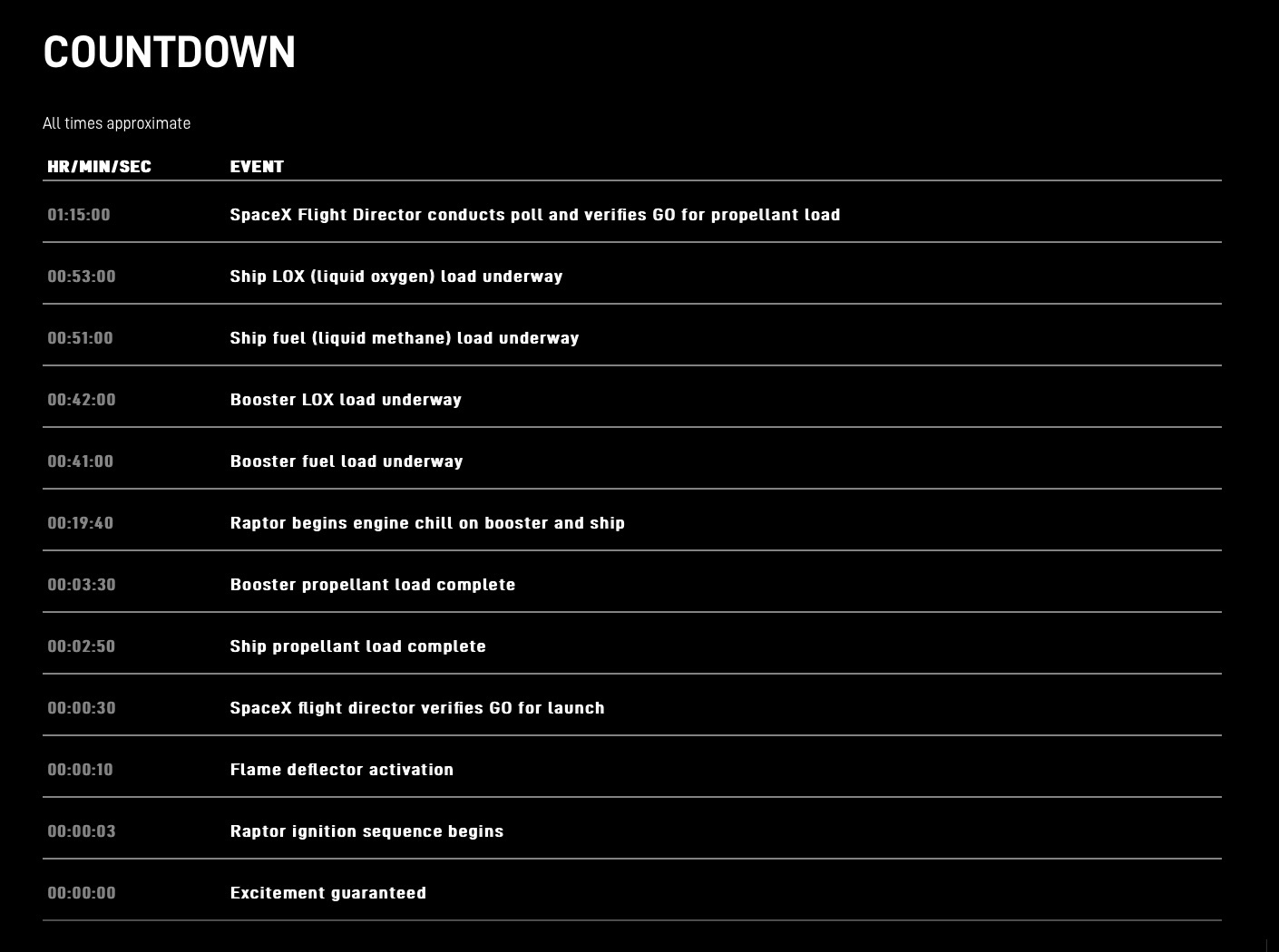
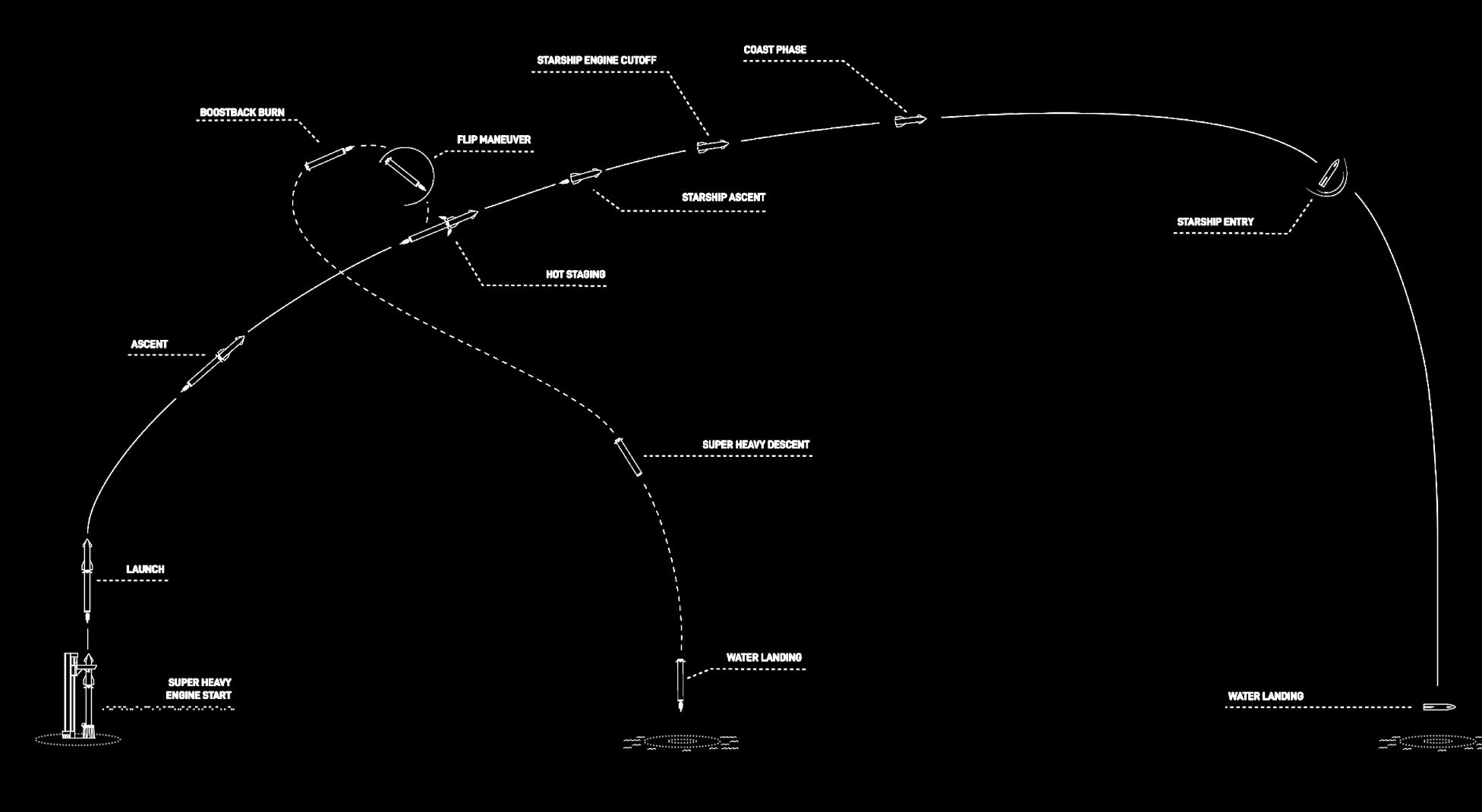
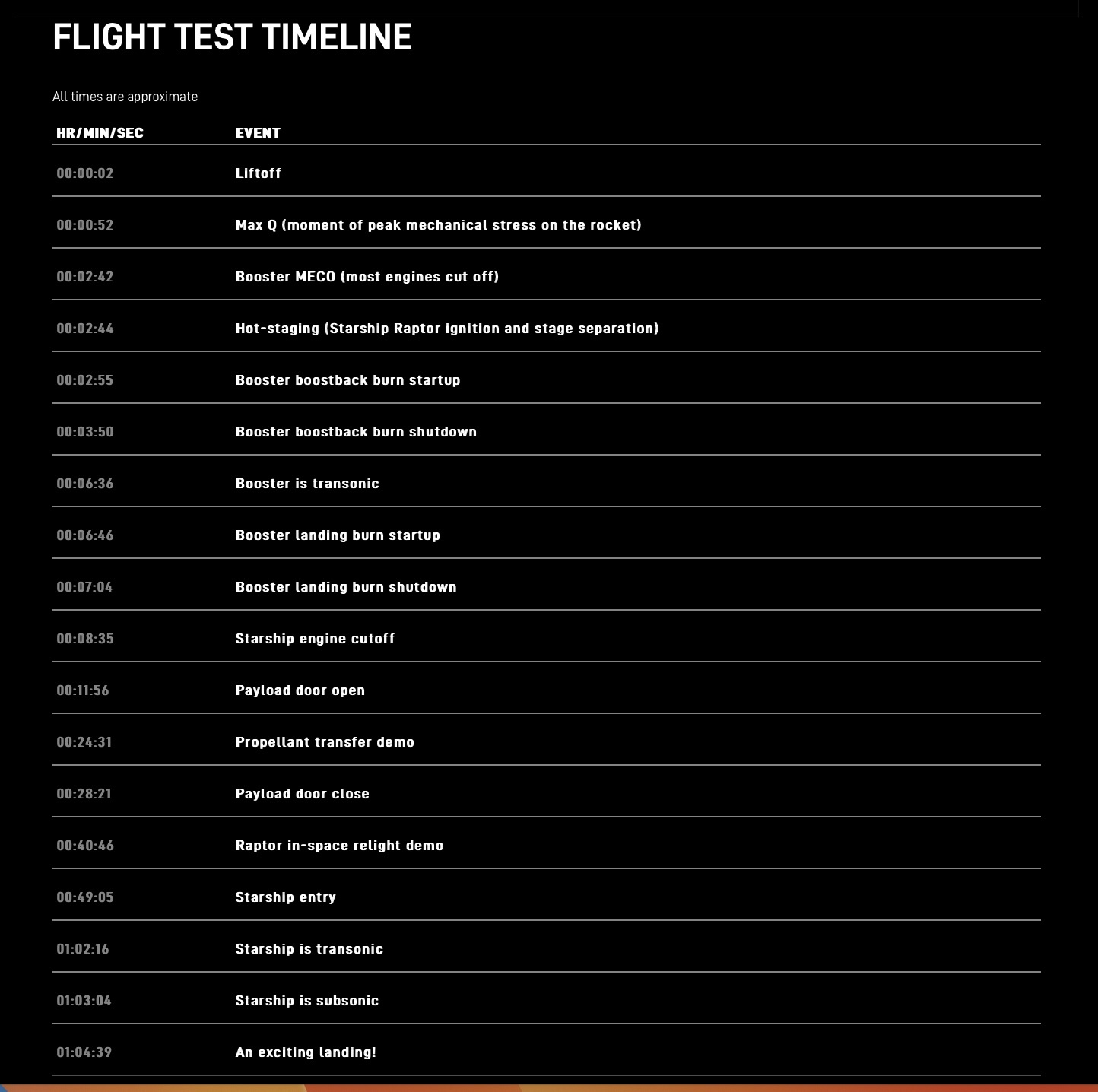
Quelle: SpaceX
+++
SpaceX continues progress towards Starship’s 3rd test flight
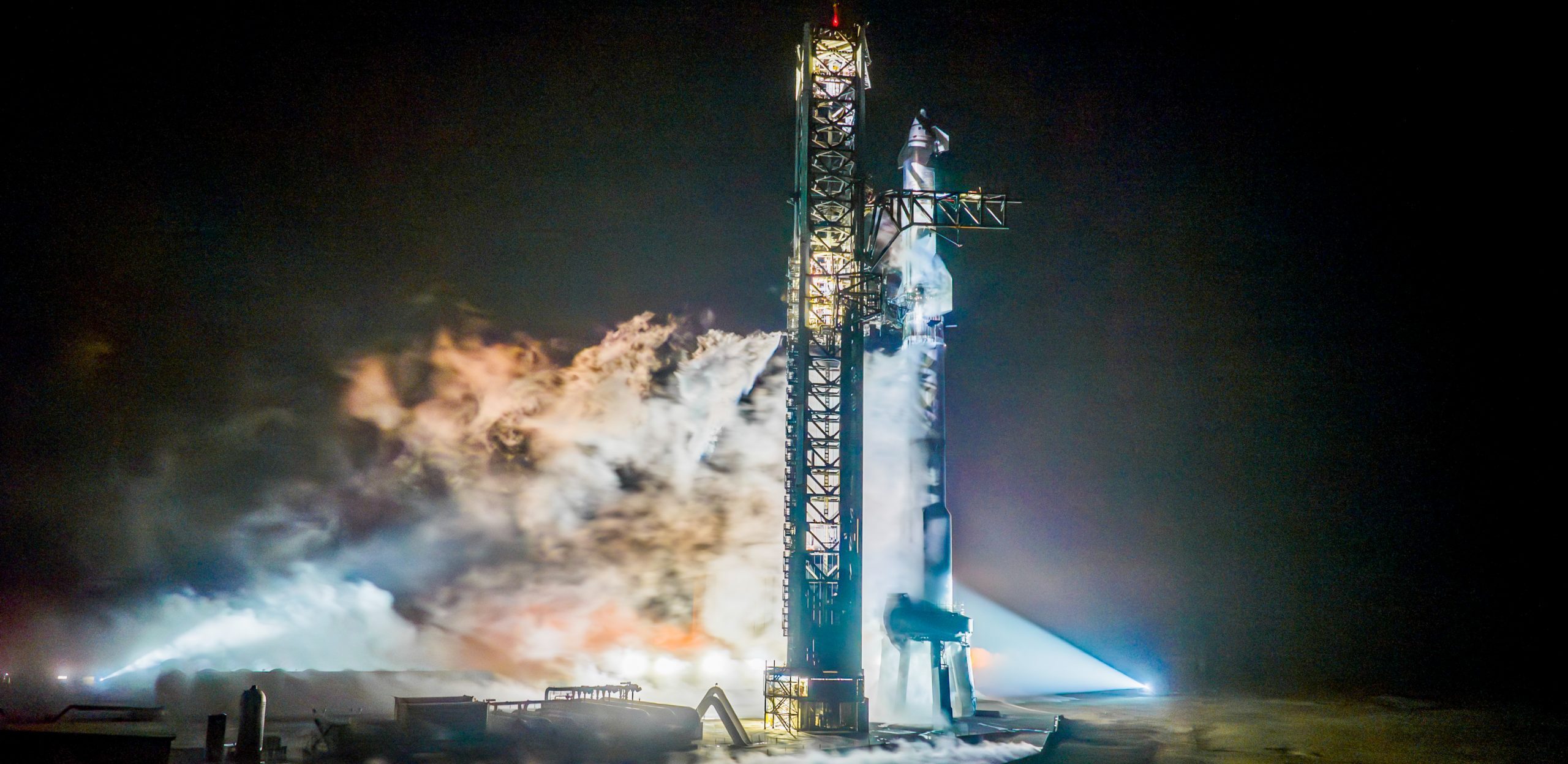
SpaceX is at least two days away from the potential 3rd test flight of Starship.
The company is still targeting the morning of Thursday, March 14th, while they await the launch license from the Federal Aviation Administration, which could come at any time between now and the evening before launch.
While SpaceX waited for the launch license from the FAA, teams continued working on preparing Ship 28 and Booster 10, including installing the Flight Termination System on Ship 10 before it was stacked back on top of Booster 10 for the final time.
Teams also removed all of the scaffolding surrounding Booster 10, signaling the work on that section of Booster 10 is completed, barring any unforeseen technical issues.
Another sign we are closer to launch is that people have started making their way to the South Texas launch site, from launch photographers to SpaceX enthusiasts.
Even a few Cybertrucks are making an appearance for photo ops with the massive rocket. This awesome photo below of two Cybertrucks and Starship in the predawn hours by photographer John Kraus is a good example.
SpaceX recently announced a slight change in the mission’s launch profile. Previous attempts aimed for a splash down North of the Hawaiian Islands, but with IFT-3, SpaceX is aiming for another suborbital trajectory with a splash down just East of Madagascar in the Indian Ocean.
The company is using the new trajectory to perform in space engine burns while flying over much less populated areas and increasing public safety. NASA has also said they could perform a fuel transfer demonstration by flowing fuel from the header tank to the main fuel tank, but SpaceX has yet to confirm this.
As soon as the FAA approves the launch license for IFT-3, we will have the updates for you here!
Quelle: TESLARATI
